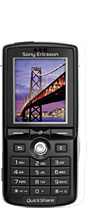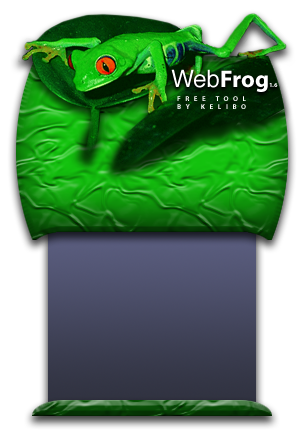 The Sony Ericsson K750i web browser
The Sony Ericsson K750i web browser
Working draft.
Just before I was leaving on a mission for the ODIHR in October 2005, I acquired me a Sony Ericsson K750i. It was a good buy. The K750i has continuously been hailed as the best camera phone in 2005 and way into 2006. In fact, it was often elected as the best mobile phone of its time.
I agree with the praises. Several images made on this site stem from that phone.
The web browser has been improved considerably since the introduction of T610. This is an analysis of its capacities. To not make you waste your time, I recommend you to use the browser for one purpose only — to download the Opera Mini browser for mobile phones. It is far better than the innate browser of the Sony Ericsson K750i mobile phone.
All this given, I here share my own experiences with the Sony Ericsson K 750i mobile phone browser. The page is in a working state. More data may be added as I learn more.
Useful links
Official Sony Ericsson specifications of the K750i written in XML
Introduction
The K750i browser is a SEMC user agent version 4.2. It is a Java application. It is capable of tables, but not capable of frames. Developers can benefit to use the <noframes> tag for information targeted for the Sony Ericsson mobile phone internet browsers. It is not Java applet enabled, and neither can it do JavaScripting.
CGI test results
Below are results from a test I ran on my standard SSI test page. It includes results of tests of CGI variables.
User agent
SonyEricssonK750i/R1L Browser/SEMC-Browser/4Profile/MIDP-2.0 Configuration/CLDC-1.1
HTTP accept of MIME codes
Complete list of MIME accept codes.
- application/vnd.wap.xhtml+xml
- application/vnd.wap.wmlc
- application/xmtml+xml
- image/gif
- */*
- text/x-vcard
- text/x-vcalendar
- image/vnd.wap.wbmp
Port
80
Protocol
HTTP/1.1
Other discoveries
Working with the phone reveals the following features / problems.
MIME codes
The browser accepts HTML and XHTML documents.
Plainly written XML documents will not be parsed and displayed, but will make the browser respond with a dialogue window that it cannot operate with the given file format and proposes the user to download the file. This also goes for documents with the proper Cascading Stylesheets or XSL stylesheets attached. A matching DTD will not help displaying the document.
Workaround
Use server side scripting to get the matching output code. One idea is ASP.
Text encoding
Officially, the K750i can output text in the following encodings:
- ISO-8859-1
- US-ASCII
- UTF-8
- ISO-10646-UCS-2
 I have had trouble making the K750i browser display UTF-8 encoded web pages correctly, at least when written with my Macintosh in OS X.4x. Everything is at risk being messed up into illegible glyphs you did not know existed in your phone, unless you resort to ISO-8859-1 encoding. This affects everybody who is not writing in plain English (or languages with the like alphabets, e.g., Netherlandic, Afrikaans, Swahili, probably some more native African languages with a Roman script).
I have had trouble making the K750i browser display UTF-8 encoded web pages correctly, at least when written with my Macintosh in OS X.4x. Everything is at risk being messed up into illegible glyphs you did not know existed in your phone, unless you resort to ISO-8859-1 encoding. This affects everybody who is not writing in plain English (or languages with the like alphabets, e.g., Netherlandic, Afrikaans, Swahili, probably some more native African languages with a Roman script).
Workaround for web editors
Write only in ISO-8859-1. The SonyEricsson K750i has lots of glyphs installed to display all Roman and several non-Roman languages (e.g., Cyrillic), but it needs the right input code. When writing Welcome
in Russian, don't encode it as Добро пожаловать, in the source code, but as
Добро пожаловать instead. Good freeware tools are Gecko based web editors (Nvu, Mozilla, Netscape (versions 6+)) or — if you are on a Mac OS X.4+ platform — the WebFrog widget by Kelibo.
Images
The SonyEricsson K750i accepts the most normal image types used for web pages, i.e., Graphic Interchange Format (.gif), Joint Photographers' Expert Group format (.jpeg, .jpg), Portable Network Graphics (.png) and even the Microsoft Bipmap format (.bmp). Earlier Sony Ericsson models tried to shrink the image sizes to fit the availabe screen width; the T610 shrinks big images to 220px. The K750i displays the full images, so you will have to scroll right to view the larger images you have. This is frustrating!
Solution for web editors
Make smaller images!
Scripting
As the web browsers of earlier models, the K750i does not respond to JavaScript codes. These are simply ignored, and attempted results are let out of the web page rendering. Server side scripting is, of course, allowed, as long as the result is well written XHTML. So go on doing your SSI, PhP, ASP, CGI, etc.
Solution for web editors
You can use this fact productively so as to write special pages for your Sony Ericsson mobile phone only, since virtually all desktop browsers can do JavaScripting are are set to do so, whereas your K750i (and K700, T610) cannot. You will need the <noscript> tag for that, but don't have to resort to server-side scripting.
CSS
The Sony Ericsson does not parse Cascading Stylesheets the same sofisticated way as the Opera Mini.
CSS properties
- max-width
- Images are immune to the max-width property.
- font-family
- All text will be rendered with the same font face, a sans-serif typeface that is default to the mobile phone.
- font-size
- All characters are rendered in the size given for the tag. There is room for a maximum of 8 text lines per screen.
- :before, :after
- The browser is immune to the :before and :after semiselectors. If you add some text or other stuff using this property, the browser will not display it (unlike Opera).
